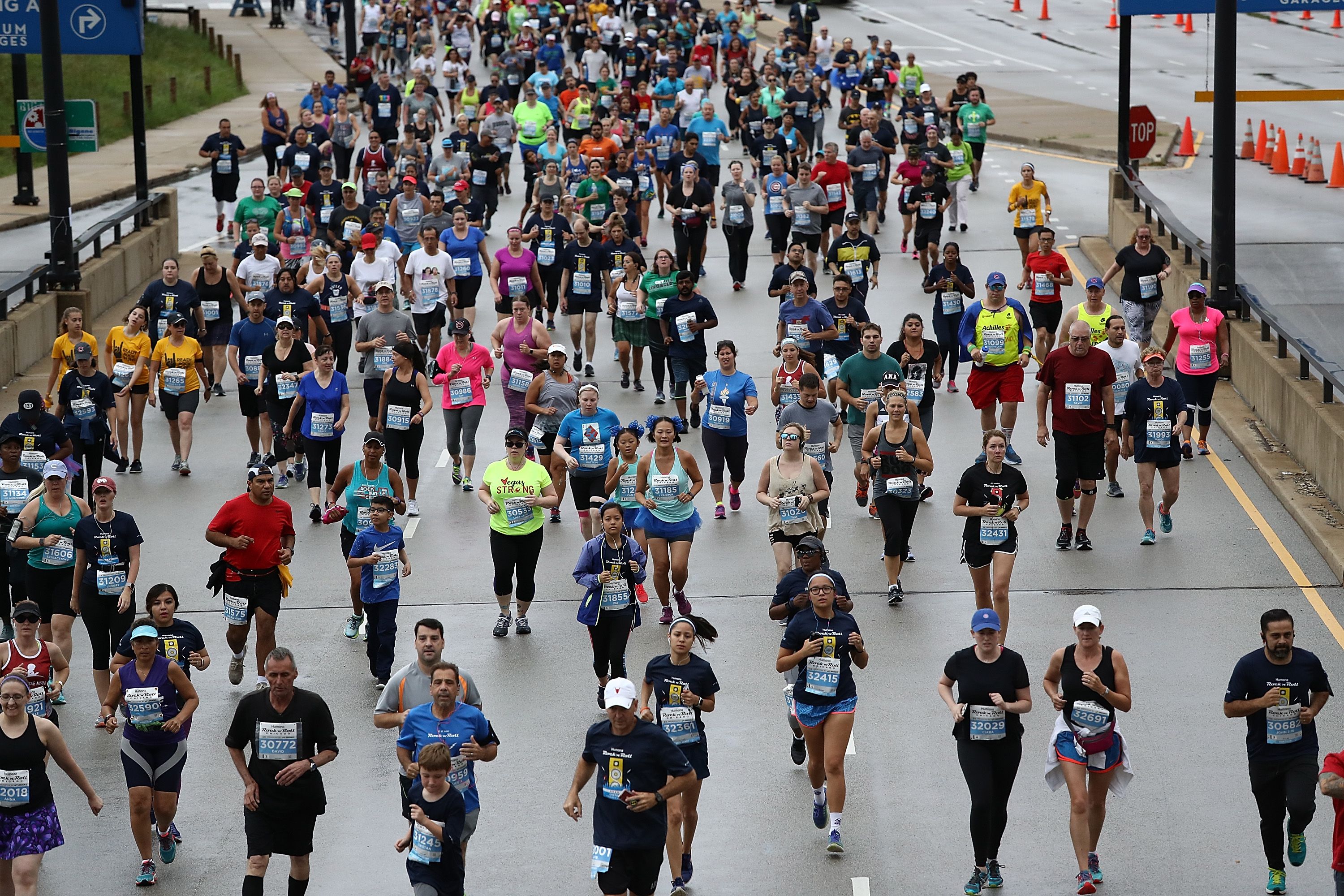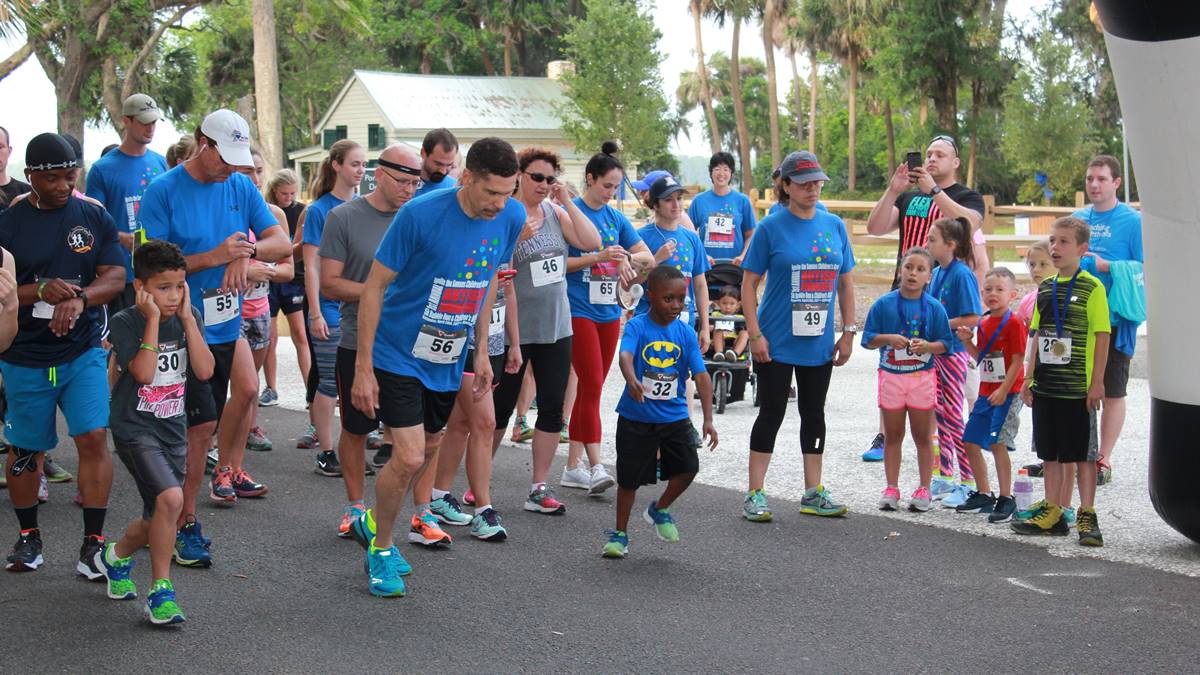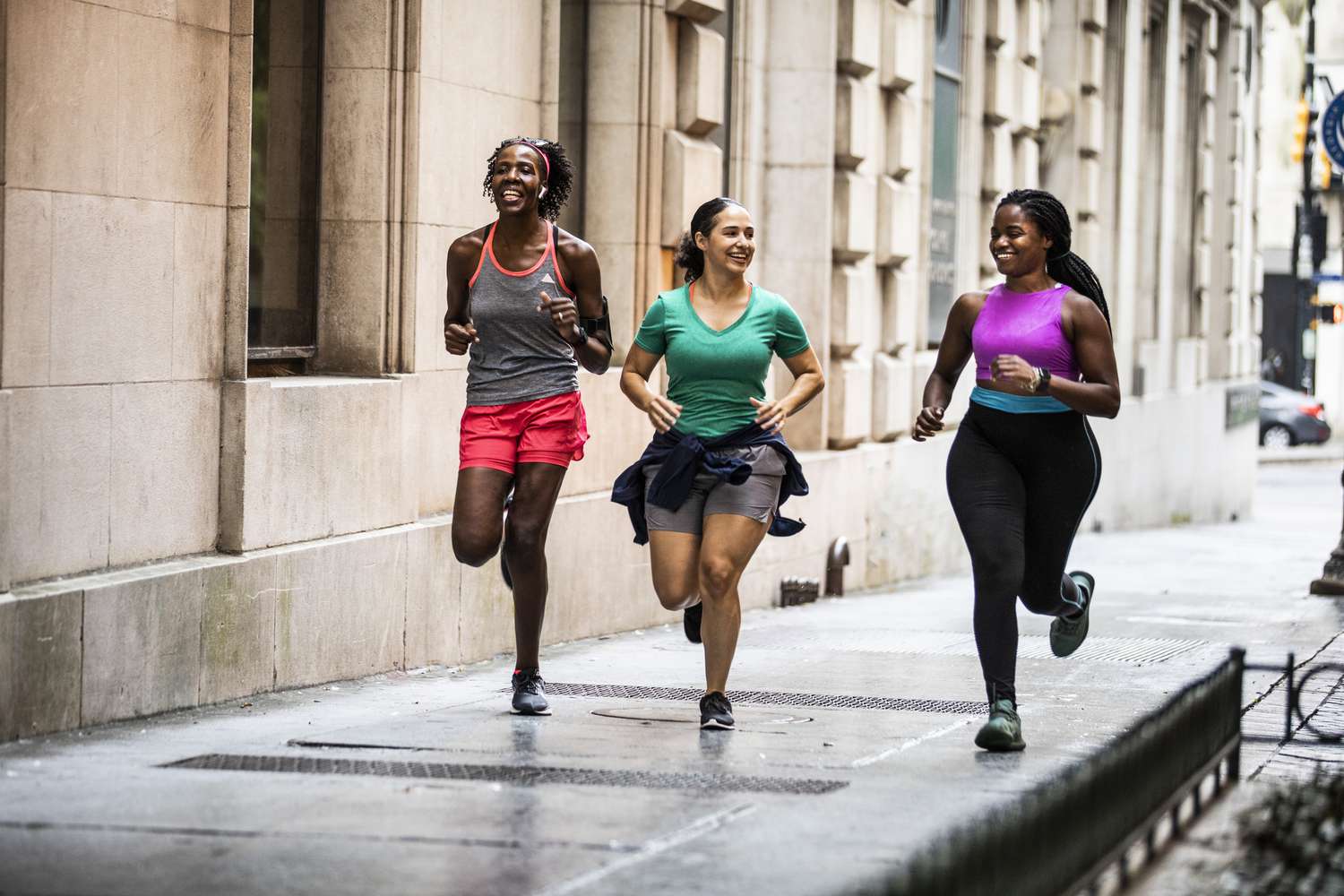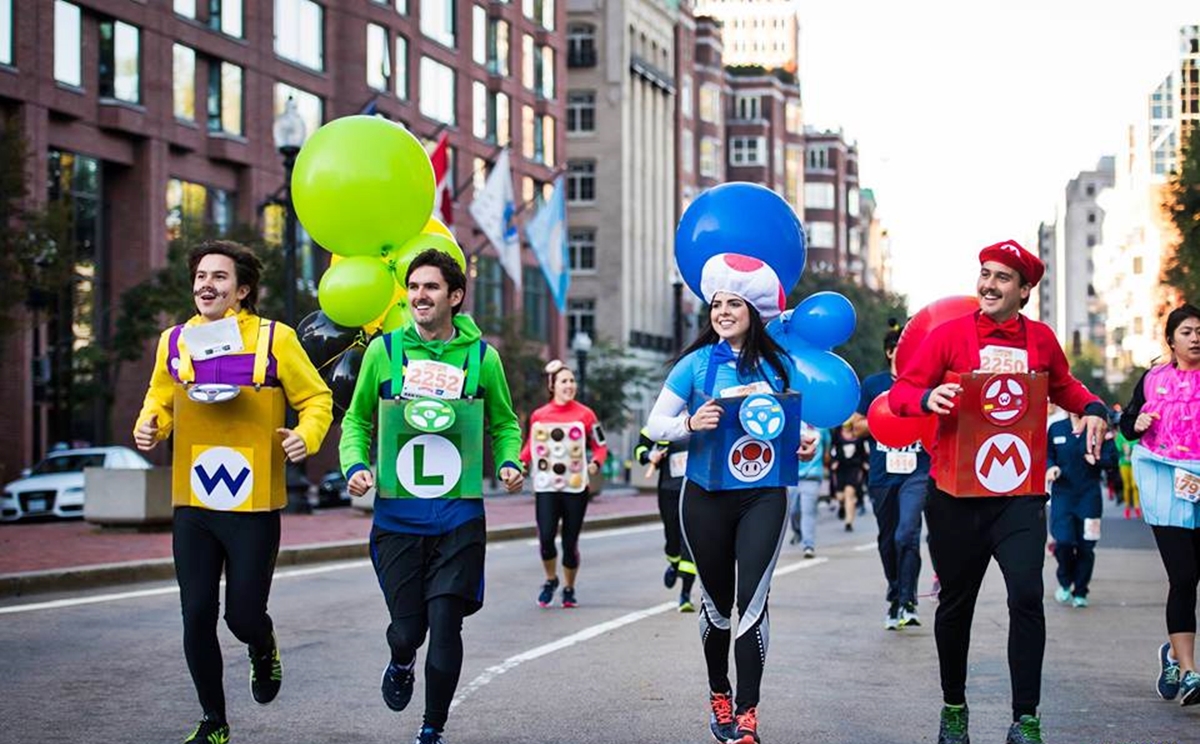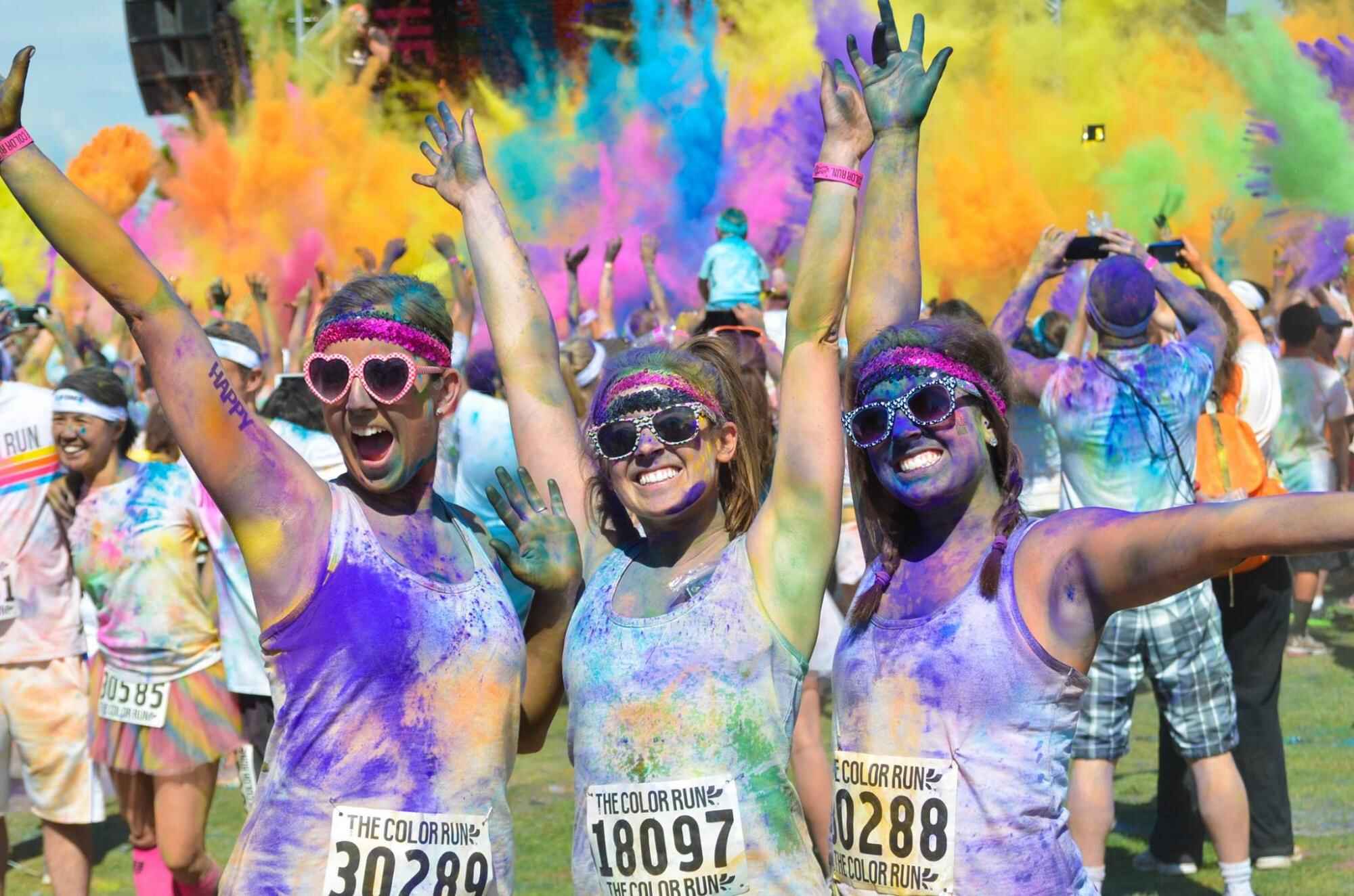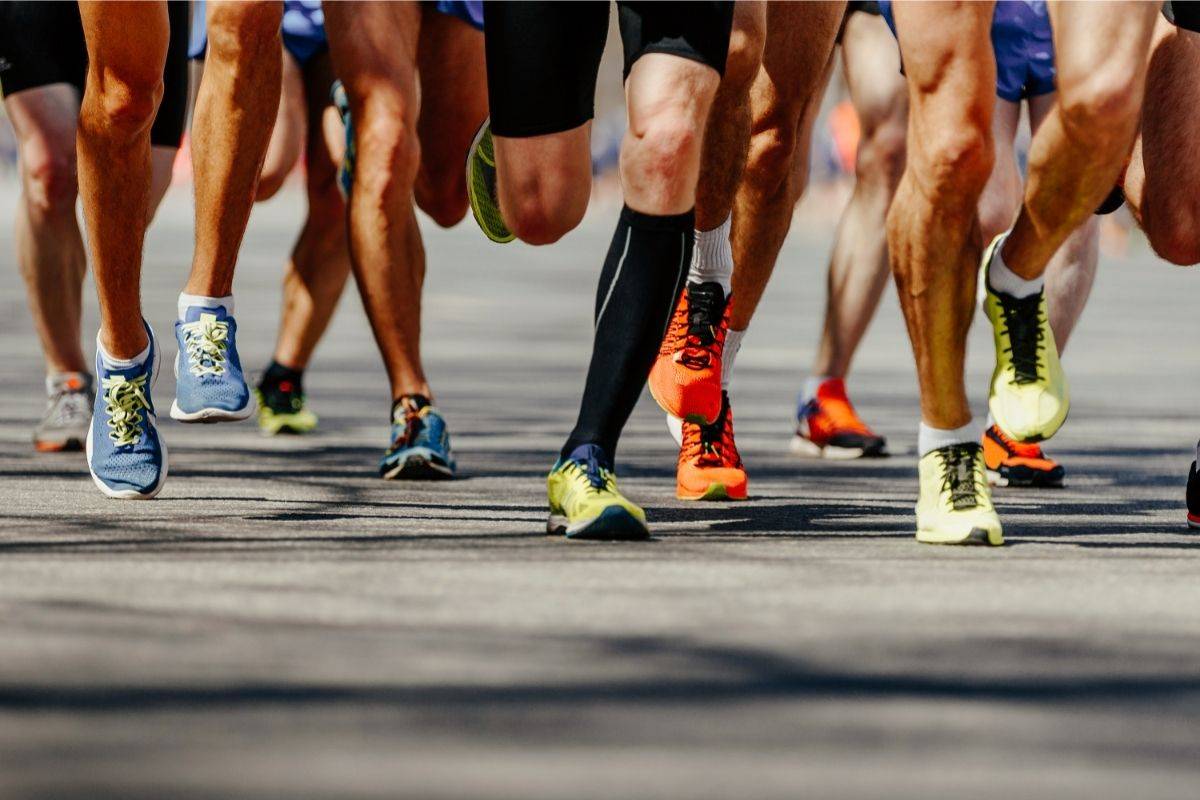

Featured
How To Organize A 5K Run/Walk
Modified: January 2, 2024
Learn how to organize a featured 5K run/walk event with our expert tips and step-by-step guide. Ensure a successful and memorable race for participants of all levels.
Introduction
Organizing a 5K run/walk can be an exciting and rewarding experience that brings together people of all ages and fitness levels for a common cause. Whether it’s for fundraising, promoting health and wellness, or showcasing a community’s spirit, a 5K run/walk can make a lasting impact and create cherished memories.
However, planning and executing a successful event requires careful organization, attention to detail, and effective marketing. From defining the purpose and goals to coordinating logistics on event day, there are several steps involved in organizing a 5K run/walk.
In this article, we will guide you through the process of organizing a 5K run/walk, providing you with valuable insights and practical tips to help you ensure a smooth and successful event.
By following these steps, you can create an unforgettable experience for participants and supporters, while achieving your desired goals and leaving a positive impact on your community.
Step 1: Define the Purpose and Goals
The first and most crucial step in organizing a 5K run/walk is to define the purpose and goals of your event. This will serve as the guiding force behind all your planning and decision-making processes.
Start by identifying the reason behind hosting the event. Is it to raise funds for a specific cause or charity? Is it to promote health and fitness in your community? Or perhaps you want to bring people together for a fun and inclusive social gathering.
Once you have determined the purpose, it’s time to set clear and measurable goals. Are you aiming to raise a certain amount of money? Do you have a target number of participants in mind? Defining these goals will help you stay focused and motivated throughout the planning process.
Additionally, consider the target audience for your event. Are you targeting serious runners or do you want to create an event that is accessible to people of all fitness levels? This will impact various aspects of your event, including the course route, timing, and overall atmosphere.
Having a well-defined purpose and goals will not only help you stay on track but will also assist you in effectively communicating with potential sponsors, volunteers, and participants. It will give your event a compelling story and make it more appealing to those who want to get involved.
Remember, the purpose and goals of your event should align with the values and interests of your target audience. By clearly defining your intentions and objectives, you will be better equipped to engage and inspire others to support and participate in your 5K run/walk.
Step 2: Create a Budget
Creating a budget is a crucial step in organizing a 5K run/walk. It helps you estimate the expenses involved and ensures that you have a realistic financial plan in place.
Start by listing all the potential costs associated with your event. This may include permits and licensing fees, venue or park rental, insurance coverage, security personnel, signage, marketing materials, medals or prizes, refreshments, and any other related expenses. Research and gather as much information as possible to come up with accurate cost estimates.
Next, consider potential sources of income for your event. This can include registration fees, sponsorships, fundraising efforts, and in-kind donations. Calculate how much revenue you anticipate from each source and factor it into your overall budget.
Once you have compiled a list of expenses and income sources, it’s time to create a detailed budget. Use a spreadsheet or budgeting software to keep track of all your financial information. Allocate funds to each expense category and ensure that you have some contingency funds for unexpected costs.
Remember, it’s important to be conservative in your estimates and leave room for flexibility. It’s better to overestimate expenses and underestimate income, as this will help you avoid financial pitfalls along the way.
To ensure that your budget remains on track, keep a record of all your expenses and income throughout the planning process. Regularly review your budget and make adjustments if necessary. This will help you stay accountable and make informed decisions, especially when it comes to allocating funds towards critical aspects of your event.
Additionally, consider creating a separate budget for your marketing and promotional activities. This will help you track and manage the expenses associated with spreading the word about your 5K run/walk to potential participants and sponsors.
By creating a well-planned budget, you will have a clear picture of your financial situation and be better prepared to make decisions that align with your goals. It will provide you with the necessary guidance to effectively manage your resources, maximize your income, and ultimately organize a successful 5K run/walk.
Step 3: Select a Date and Location
Choosing the right date and location is crucial for the success of your 5K run/walk. It’s important to consider several factors to ensure maximum participation and a memorable experience for all involved.
Start by researching local events and activities that may compete with your chosen date. Avoid scheduling your event on the same day as other popular races or community events, as this may split the participant pool and dilute your attendance. Keep in mind any holidays or major local events that may impact turnout or availability of resources.
Next, select a location that is suitable for your event. Consider factors such as accessibility, parking availability, and the capacity to accommodate your anticipated number of participants. Parks, college campuses, and recreational areas are often popular choices for 5K runs/walks, as they provide scenic routes and ample space for post-event festivities.
When selecting a date and location, also consider the weather conditions during that time of year. Extreme heat, cold, or rain may adversely affect turnout and participant experience. Opt for a season and time of day that are generally pleasant and comfortable, ensuring the safety and enjoyment of all participants.
Once you have identified potential dates and locations, it’s a good idea to visit the sites in person. Assess the infrastructure, amenities, and any potential challenges that may arise. Take note of any permits or permissions required for hosting an event at the selected location and initiate the necessary application process.
Remember, the date and location of your 5K run/walk should align with the purpose and goals of your event. Consider the target audience and accessibility for the desired participant demographic. Additionally, keep in mind the logistics involved in setting up the course route, registering participants, and arranging for post-event celebrations.
By carefully selecting a date and location, you can create an environment that promotes participation, fosters community engagement, and allows for a memorable experience for all involved in your 5K run/walk.
Step 4: Obtain Permits and Permissions
Obtaining the necessary permits and permissions is an important step in organizing a 5K run/walk. It ensures that your event is legally compliant and allows you to utilize the chosen location and resources without facing any issues or setbacks.
Start by researching the specific permits and permissions required for organizing a running or walking event in your area. This may include permits for road closure, public land usage, sound amplification, food handling, and alcohol sales (if applicable). Check with the local government authorities, parks and recreation departments, and relevant agencies to understand the regulations and processes involved.
Once you have identified the permits needed, gather all the necessary documentation and information required for the application process. This may include event details, insurance coverage, route maps, and participant safety plans. Ensure that you have all the requisite paperwork in order to avoid any delays in obtaining the permits.
It’s important to initiate the permit application process well in advance to allow for sufficient processing time. Government agencies and departments often have specific timelines and requirements, so make sure to adhere to them to avoid any last-minute complications.
In addition to permits, it’s also important to obtain any required permissions from private property owners, if your event passes through their premises. Seek written consent and establish clear communication to ensure a smooth and collaborative relationship with property owners.
Remember, obtaining permits and permissions may also involve fees or deposits. Budget for these expenses in your overall event budget to avoid any financial surprises.
By diligently navigating the permit and permission process, you will ensure that your 5K run/walk is compliant with local regulations and guidelines. This will not only provide a safe and organized experience for participants but will also help you build a positive reputation and maintain good relations with the community and authorities.
Step 5: Recruit Volunteers
Recruiting volunteers is an essential step in organizing a 5K run/walk. Volunteers play a vital role in ensuring the smooth operation of the event and can greatly contribute to its overall success.
Start by identifying the different roles and responsibilities that need to be fulfilled on event day. This may include registration, course marshaling, water stations, first aid, crowd management, and post-event cleanup. Determine the number of volunteers needed for each role based on the size and complexity of your event.
Next, create a comprehensive volunteer recruitment plan. Utilize various channels such as social media, community groups, local schools, colleges, and volunteer organizations to spread the word about your event and the volunteer opportunities available. Craft compelling messages that highlight the benefits of volunteering and the positive impact they can make by being a part of your 5K run/walk.
Make the volunteer recruitment process clear and simple. Provide an online form or registration system where interested individuals can sign up and indicate their preferred role and availability. Ensure timely communication and follow-up with volunteers to confirm their participation and provide any necessary training or instructions.
When recruiting volunteers, consider their skills, interests, and availability. Aim for a diverse group of volunteers who can bring different perspectives and expertise to the event. Assign roles based on individual strengths and make sure to provide clear instructions and training to all volunteers prior to the event.
It’s important to show appreciation and gratitude towards your volunteers. Provide them with volunteer t-shirts, certificates, or thank-you notes to acknowledge their contributions. Consider organizing a post-event gathering or celebration to recognize and thank your volunteers for their hard work and dedication.
By recruiting a team of dedicated and enthusiastic volunteers, you can ensure that all aspects of your 5K run/walk are well-organized and executed. Volunteers not only contribute their time and skills but also bring a sense of community spirit and support, making your event a memorable experience for all involved.
Step 6: Develop a Marketing Plan
A well-developed marketing plan is essential for ensuring a successful 5K run/walk. It helps you spread the word about your event, attract participants and sponsors, and create buzz within the community. By implementing effective marketing strategies, you can maximize participation and create a memorable experience for all involved.
Start by identifying your target audience. Determine who would be interested in participating in or supporting your event. Are you targeting fitness enthusiasts, families, or a specific demographic? Understanding your audience will help you tailor your marketing messages and reach the right people.
Develop a strong and consistent branding strategy for your event by creating a captivating logo, tagline, and color scheme. Use these elements across all promotional materials, including social media posts, website, flyers, and banners. Consistent branding helps create recognition and establishes a professional image for your 5K run/walk.
Utilize various marketing channels to promote your event. Establish a strong online presence by creating a dedicated website or landing page where participants can find essential information and register for the event. Leverage social media platforms to share engaging content, post updates, and interact with potential participants and sponsors.
Develop compelling content to engage and attract your target audience. Create visually appealing graphics, videos, and promotional materials that highlight the unique aspects and benefits of your 5K run/walk. Share participant testimonials, success stories from previous events, and any unique features or activities that set your event apart.
Collaborate with local media outlets, such as newspapers, radio stations, and television channels, to help generate publicity. Issue press releases, invite journalists to cover the event, and seek opportunities for interviews or features. The media can help you reach a wider audience and increase awareness about your 5K run/walk.
Consider the power of partnerships and collaborations. Connect with local businesses, community organizations, and fitness clubs to explore sponsorship opportunities and cross-promotion. Partnering with like-minded entities can expand your reach, attract participants, and provide additional resources or incentives.
Lastly, don’t forget about the power of word-of-mouth marketing. Encourage participants, volunteers, and sponsors to share their involvement in your event on social media, recommend it to their friends and family, and leave positive reviews and testimonials. Personal recommendations and testimonials can have a significant impact on attracting new participants and building credibility.
By developing a comprehensive marketing plan, you can effectively promote your 5K run/walk and ensure maximum participation. A well-executed marketing strategy will help create excitement, build anticipation, and generate a sense of community involvement, resulting in a successful and memorable event.
Step 7: Secure Sponsors
Securing sponsors is an important step in organizing a 5K run/walk as it provides financial support, resources, and increased visibility for your event. Sponsors not only help alleviate some of the financial burden but also contribute to the overall success and impact of your event.
Start by identifying potential sponsors who align with the purpose and goals of your event. Look for businesses, organizations, and individuals who are likely to be interested in reaching your target audience or have a vested interest in supporting the cause behind your 5K run/walk.
Create a compelling sponsorship package that outlines the benefits and exposure sponsors will receive in return for their support. Include details such as logo placement on promotional materials, recognition at the event, social media mentions, and other opportunities for brand exposure.
Keep in mind that sponsorship isn’t just about monetary support. In-kind sponsorships can also be valuable. Consider reaching out to local businesses for donations of food, beverages, prizes, or services that can enhance the participant experience or reduce costs.
When approaching potential sponsors, personalize your pitch. Explain the specific ways in which their support will make a difference and align with their own values and interests. Highlight the positive impact their sponsorship will have on the community and provide examples of previous successful events or collaborations.
Remember to establish clear communication channels with your sponsors and keep them updated on the progress and impact of your 5K run/walk. Regularly acknowledge their support through social media shout-outs, website mentions, and personalized thank-you letters or certificates of appreciation.
Consider offering sponsorship tiers to provide options for businesses with varying budget capacities. This allows for increased participation from a wide range of sponsors and enhances the overall financial stability of your event.
Don’t forget about the power of building long-term relationships with sponsors. If your event is recurring or you have future events in mind, prioritize maintaining a positive and ongoing partnership with sponsors who have shown support in the past. This can lead to continued support and increased sponsorship opportunities in the future.
By securing sponsors, you can enhance the financial viability and success of your 5K run/walk. Sponsors provide crucial support, allowing you to allocate resources towards improving the participant experience, increasing outreach efforts, and ultimately, making a greater impact within your community.
Step 8: Plan the Course Route
Planning the course route is a crucial step in organizing a 5K run/walk as it determines the path that participants will take during the event. A well-designed course route not only provides an enjoyable and safe experience but also contributes to the overall success of your event.
Start by determining the distance and general layout of the course. A standard 5K run/walk is approximately 3.1 miles. Consider the abilities and preferences of your target audience when designing the course. Aim for a route that is accessible to participants of different fitness levels, but also provides a challenge for more experienced runners.
When selecting a course route, keep safety as a top priority. Choose well-lit areas, avoid high traffic zones, and ensure the course is free from potential hazards such as potholes or construction areas. If necessary, consult with local authorities, such as law enforcement or traffic control personnel, to ensure the safety of participants.
Take into consideration the scenic and interesting elements along the course route. Incorporating landmarks, parks, or other noteworthy locations can enhance the experience for participants and provide a unique selling point for your event.
In addition, plan for clear and visible signage along the course. Use arrows, mile markers, and signage with motivational messages to guide participants and keep them motivated throughout the race. Volunteers stationed at critical points can also assist in directing participants and ensuring everyone stays on track.
Consider the logistics involved in setting up and dismantling the course route. Determine whether you need any equipment such as barricades, cones, or tape to clearly mark the route. Ensure that you have the resources and manpower to set up and manage the course effectively on event day.
Don’t forget to factor in any additional elements that may be required, such as water stations or medical aid stations, along the course route. These are essential to ensure the well-being and hydration of participants and should be strategically placed at appropriate intervals.
Finally, communicate the course route to participants ahead of time. Provide maps and clear instructions on your event website or in participant information packets. This will allow participants to familiarize themselves with the route beforehand and mentally prepare for the race.
By carefully planning the course route, you can create an engaging and memorable experience for participants. A well-thought-out route, combined with proper signage and safety measures, contributes to a successful and enjoyable 5K run/walk.
Step 9: Arrange for Timing and Scoring
Arranging for timing and scoring is a critical step in organizing a 5K run/walk, as it ensures accurate and fair results for participants. Proper timing and scoring procedures contribute to the overall professionalism and integrity of your event.
Start by selecting a reliable timing system that suits the needs of your event. There are various options available, including chip timing, bib timing, and manual timing. Consider factors such as budget, participant size, and the level of precision required when making your decision.
If you opt for chip or bib timing, collaborate with a professional timing company that specializes in race timing. Ensure that they have the necessary equipment and expertise to accurately record participants’ start and finish times. Discuss their process for handling any potential timing issues or discrepancies.
Coordinate with the timing company to determine the best locations for timing mats or checkpoints along the course. These points should be easily accessible for participants and ensure accurate timing data collection. Communicate these locations clearly to participants and ensure they understand the process for correctly attaching or utilizing their timing devices.
In addition to timing, scoring is essential for determining and recognizing the top participants in various categories. Determine how you will handle scoring, whether it’s based on the overall fastest times or specific age groups or divisions.
Set clear guidelines and rules for scoring to ensure fairness and consistency. Clearly communicate these rules to both participants and volunteers involved in the timing and scoring process.
Ensure that you have an efficient system in place for recording and verifying results. This may involve data entry, printing and posting preliminary or final results, and resolving any timing or scoring discrepancies as quickly as possible.
Take into consideration the awards or recognition you will provide to the top finishers. Plan for medals, trophies, or certificates to acknowledge their achievements. Reserve a designated area for announcing and presenting the awards during the post-event festivities.
Communicate the timing and scoring process to participants well in advance. Include this information on your event website, in participant packets, and through email communications. A clear and transparent process builds trust and confidence among participants and ensures their understanding of the scoring system.
By arranging for accurate and reliable timing and scoring, you can provide a professional and enjoyable experience for participants. It adds credibility to your event, motivates participants to perform their best, and ensures a fair competition for all involved in your 5K run/walk.
Step 10: Set Up Registration Process
The registration process is a crucial step in organizing a 5K run/walk, as it enables participants to sign up for the event and provides you with essential information to plan and manage logistics. Setting up an efficient and user-friendly registration process ensures a smooth experience for both participants and organizers.
Start by determining the registration platform and method that best suits your needs. There are several options available, including online registration platforms, paper-based forms, or a combination of both. Online registration platforms are often recommended as they offer convenience, easy data management, and secure payment processing.
Select a reliable and user-friendly online registration platform that allows participants to provide all the necessary information, sign necessary waivers, select their participation category, and make payment if applicable. Ensure that the platform provides registration confirmation emails with pertinent details and updates.
When designing the registration form, collect essential participant information such as name, age, contact details, emergency contact information, and any specific requirements or preferences. Allow participants to provide information on t-shirt sizes, if applicable, to ensure accurate ordering and distribution.
Consider offering different registration options and pricing tiers to accommodate various participant needs and deadlines. Early-bird registration discounts or team registration options can incentivize participants to sign up early or encourage group participation.
Clearly communicate the registration process and deadlines on your event website, social media channels, and other promotional materials. Provide step-by-step instructions and include a Frequently Asked Questions section to address common queries.
Ensure that participant data is securely stored and managed. Adhere to data protection and privacy regulations to maintain the trust of your participants. If applicable, consult with legal counsel to ensure compliance with relevant laws.
Establish a system for tracking and managing participant registrations. Regularly monitor the number of registrations and communicate updates on participant numbers through your marketing and promotional efforts. This helps build anticipation and may attract more participants.
Consider implementing a system for providing participants with race bibs, timing devices, or other event-related materials. Determine whether these will be mailed to participants ahead of time or distributed on the day of the event. Allow sufficient time for preparing and packaging these items if necessary.
By setting up an efficient registration process, you can maximize participant engagement and streamline event management. A seamless registration experience encourages more sign-ups, provides you with important participant data, and sets the foundation for a successful 5K run/walk.
Step 11: Organize Pre-Event Logistics
Organizing pre-event logistics is crucial for ensuring a smooth and well-prepared 5K run/walk. Attention to detail in this step will help you anticipate challenges, provide a seamless experience for participants, and set the stage for a successful event day.
Start by creating a detailed timeline and checklist for all pre-event logistics. This should include deadlines for securing permits and permissions, ordering supplies, coordinating with vendors, and finalizing participant communication.
Coordinate with vendors and suppliers to ensure the timely delivery of necessary items such as timing equipment, medals, t-shirts, water stations, food, and any other event-related materials. Confirm the quantities and quality of these items before event day.
Ensure that you have a sufficient number of volunteers and assign them specific roles and responsibilities. Clearly communicate their tasks and provide them with any necessary instructions or training prior to the event. Consider conducting a volunteer orientation session to ensure everyone is well-prepared.
Create a thorough event day timeline that outlines the sequence of activities, from participant arrival and check-in to post-event celebrations. Include set-up and tear-down times for various areas and activities, ensuring that each aspect of the event runs smoothly and on schedule.
Communicate important information to participants through various channels, such as email, social media, and your event website. Provide them with details about parking, check-in procedures, and any last-minute updates or changes. Encourage participants to arrive early to allow for a stress-free experience.
Consider implementing a system for packet pickup before the event. This allows participants to collect their race bibs, timing devices, t-shirts, and any other materials in advance, reducing congestion on event day.
Ensure that participant safety is a top priority. Collaborate with local law enforcement or security personnel to establish a comprehensive safety plan. Communicate safety measures to participants and provide them with guidelines to follow during the event.
Prepare a comprehensive event-day emergency plan that includes the contact information of key personnel, medical facilities, and emergency services. Communicate this plan to all event staff and volunteers to ensure a quick and effective response in case of any emergencies.
Conduct a final walkthrough of the event venue and course route to ensure that all necessary signage, amenities, and safety measures are in place. Test timing equipment and check for any potential issues that may arise on event day.
By organizing pre-event logistics efficiently, you can create a well-coordinated and seamless experience for participants. Paying attention to details, preparing a thorough schedule, and ensuring participant safety contribute to the overall success and enjoyment of your 5K run/walk.
Step 12: Coordinate Event Day Setup
Coordinating event day setup is a crucial step in organizing a 5K run/walk to ensure a smooth and successful event. Effective coordination and attention to detail on event day set the stage for a positive participant experience and a memorable event.
Start by arriving early at the event venue to oversee the setup process. Coordinate with volunteers and staff to ensure that all necessary areas are properly set up, including registration/check-in, starting line, finish line, water stations, and post-race celebrations.
Communicate clear instructions to volunteers regarding their assigned tasks and areas of responsibility. Make sure they are well-versed in event logistics and any changes or updates that may have occurred since their last briefing.
Ensure that all necessary equipment and supplies are readily available, including tables, chairs, signage, first aid kits, and any other event-specific items. Double-check that timing equipment is properly set up and tested for accuracy.
Set up a well-organized registration/check-in area to efficiently process participants. Ensure that there are sufficient staff and volunteers to handle check-ins, distribute race bibs, and answer any participant inquiries.
Review and familiarize yourself with the emergency plan and communicate it to all staff and volunteers. Ensure that medical personnel, if necessary, are available and stationed at designated areas along the course route.
Coordinate with any vendors or suppliers on site to ensure a smooth setup and coordination of services, such as food and beverage vendors or merchandise displays. Verify that any necessary permits or certifications are visible and up to date.
Conduct a final walkthrough of the course route to address any last-minute issues or concerns. Check for any debris, hazards, or potential safety risks and ensure that all signage and markers are in place and visible.
Ensure that there are clear communication channels in place for staff, volunteers, and participants to address any last-minute changes or emergencies. Establish a central command post or a designated point of contact for immediate assistance and communication.
Finally, maintain a positive and enthusiastic attitude throughout the event day. As the event organizer, your presence and demeanor set the tone for the entire event. Interact with participants, volunteers, and sponsors, expressing appreciation for their support and acknowledging their contributions.
By effectively coordinating event day setup, you create an environment that fosters a smooth participant experience and ensures a memorable 5K run/walk. Proper organization, attention to detail, and clear communication contribute to the overall success and enjoyment of the event.
Step 13: Execute the Run/Walk
Executing the run/walk is the culmination of all the planning and preparation that has gone into organizing the 5K event. This step focuses on ensuring the smooth and efficient flow of the run/walk, providing a positive experience for participants and achieving the goals set for the event.
As participants arrive, make sure the registration/check-in process is well-organized and staffed adequately to handle the crowd. Have a system in place to quickly distribute race bibs, timing devices, and any other necessary materials.
Ensure that all participants are briefed on important information, including the course route, starting procedures, safety guidelines, and any last-minute updates or changes. Make announcements if necessary and answer any participant inquiries.
Coordinate with volunteers stationed along the course to provide direction and support to participants. Ensure that water stations and any necessary medical aid stations are fully stocked and properly staffed.
Keep track of participant progress and periodically update the overall progress and timing information. Make regular announcements, both in-person and through a public address system, to keep participants informed about their progress and motivate them to keep going.
Throughout the event, monitor the course and address any issues or emergencies that may arise promptly. Be prepared to make real-time adjustments to ensure participant safety and the smooth flow of the event if unexpected situations occur.
As participants cross the finish line, congratulate and acknowledge their achievement. Present finisher medals or any other recognition items. Maintain an energetic and supportive atmosphere by engaging with participants and celebrating their accomplishments.
After the run/walk is complete, coordinate the post-event celebrations and activities. Create a festive atmosphere with music, refreshments, and any planned entertainment or awards ceremonies. Thank volunteers, sponsors, and participants for their support and participation.
Collect feedback from participants and volunteers to gain insights into their experience and identify areas for improvement. Evaluate the overall success of the event based on participant satisfaction, achievement of goals, and adherence to the planned schedule and logistics.
Ensure that clean-up and breakdown activities are well-coordinated and efficient. Collect any remaining equipment, signage, and waste material, leaving the event site in a clean and organized state.
By executing the run/walk effectively, you provide participants with a memorable and impactful experience. Your attentiveness and responsiveness throughout the event ensure a positive and enjoyable atmosphere that encourages participants to achieve their personal goals and fosters a sense of community spirit.
Step 14: Provide Post-Event Support
Providing post-event support is a crucial step in organizing a 5K run/walk. It allows you to wrap up the event effectively, show appreciation to participants and volunteers, and assess the overall success of the event. Post-event support ensures that participants have a positive lasting impression of your event and encourages their continued engagement and support.
Start by promptly thanking all participants, volunteers, and sponsors for their involvement and contributions. Express your gratitude through email, social media posts, or personalized thank-you letters. Acknowledge their role in making the event a success and highlight the impact their support has had on the community or the cause you are championing.
Share highlights and photos from the event on your website, social media platforms, and any newsletters or communications you have with the participants. This helps participants relive their experience and share their accomplishments with friends and family, further promoting your event.
Collect and analyze feedback from participants and volunteers about their experience. Send out surveys or feedback forms to gather valuable insights that can inform future improvements and adjustments to your event. Take note of both positive feedback and areas for improvement, and consider implementing suggestions that align with your event’s purpose and goals.
Continue engaging with participants through post-event communication. Provide updates on the impact of the event, any follow-up actions or initiatives that may be taking place, and opportunities for continued involvement or support.
Recognize and celebrate the achievements of top finishers and fundraisers, if applicable. Award prizes, trophies, or certificates to the winners, and publicly acknowledge their efforts and contributions. This not only provides recognition but also motivates participants to continue their engagement in future events.
Evaluate the success of your event based on the goals you set during the planning stage. Review financial reports, attendance numbers, and other key performance indicators. Assess whether you achieved your desired outcomes and identify areas that can be improved for future events.
Reflect on lessons learned from the event and document them for future reference. Consider creating an event debrief report that captures the successes, challenges, and recommendations for future improvements. This will help you streamline the planning process and build on the event’s momentum for future editions.
Finally, express your appreciation and maintain relationships with sponsors. Provide them with a post-event report showcasing the results and impact of their support. Regularly communicate with them and explore opportunities for future collaborations or sponsorships.
By providing post-event support, you ensure that the positive experiences and connections made during your 5K run/walk continue to resonate with participants and volunteers. This fosters a sense of community and goodwill, encourages ongoing engagement, and builds a foundation for future successful events.
Conclusion
Organizing a 5K run/walk is a fulfilling and rewarding endeavor that brings people together for a common purpose. By following these steps, you can ensure a successful and memorable event that leaves a lasting impact on participants and the community.
Start by defining the purpose and goals of your event, setting the foundation for all your planning and decision-making processes. Create a budget to understand and manage your financial resources effectively. Select the right date and location, keeping in mind the target audience and logistics.
Obtain the necessary permits and permissions to ensure legal compliance and a smooth event experience. Recruit volunteers who will contribute their time and energy to make the event a success. Develop a comprehensive marketing plan to promote your event and attract participants and sponsors.
Secure sponsors to provide financial support and resources, aligning their interests with the goals of your event. Plan the course route with participant safety and enjoyment in mind. Arrange for accurate timing and scoring to provide a fair and competitive experience.
Set up a seamless registration process that accommodates participants’ needs and collects essential information. Organize pre-event logistics to ensure a smooth operation on event day. Coordinate event day setup and execute the run/walk with efficiency and enthusiasm.
After the run/walk, provide post-event support by expressing gratitude, sharing highlights, and gathering feedback for future improvements. Assess the overall success of the event and maintain relationships with sponsors for continued support.
By following these steps and infusing your unique creativity, passion, and attention to detail, your 5K run/walk will become a memorable event that positively impacts your participants and community. Remember, organization and preparation are key, but ultimately, it’s the human connections and the collective achievement that make such an event truly special.
